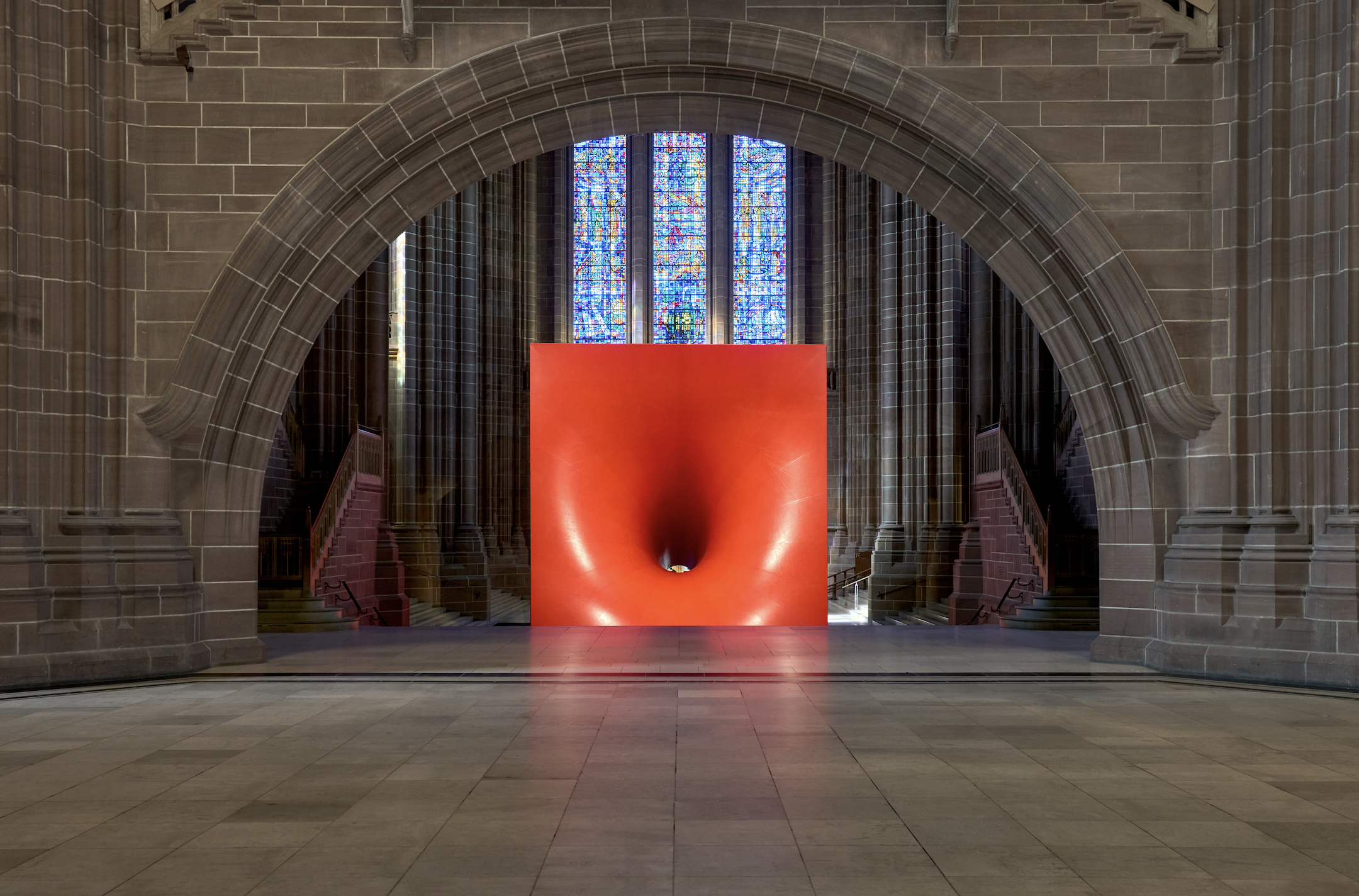
Anish Kapoor is marking his first Liverpool presentation in over 40 years with a sprawling new show commemorating the 100th anniversary of Liverpool Cathedral. The free exhibition, titled “Monadic Singularity,” spans a range of Kapoor’s sculptures from the past 25 years throughout Liverpool Cathedral, among the few sites large enough host to spectacles like Kapoor’s massive, immersive sculpture Sectional Body Preparing for Monadic Singularity (2015). The centenary show marks this artwork’s U.K. debut, too.
Liverpool Cathedral isn’t nearly the oldest place of worship in the U.K.—that’s Canterbury Cathedral, founded in 597. But, it is by far the U.K.’s largest, and the eighth-largest in the world. The grandiose church has gotten into the habit of hosting art shows, such as a group exhibition invoking all five senses earlier this summer, and a solo exhibition by Ukrainian artist Katya Buchatska last spring.
Anish Kapoor, Sectional Body preparing for Monadic Singularity (Interior) (2015) © Rob Battersby Photography
But, “Monadic Singularity”—supported by Culture Liverpool, the Liverpool BID Company, jewelry brand Boodles, and Lisson Gallery—proves Liverpool Cathedral’s most ambitious exhibition yet. “In the last five or six years, we’ve worked very hard to bring an exciting array of cultural programming to the cathedral,” Paul Smith, their Director of Enterprise, has remarked regarding the show. “We wanted to take the program up a notch or two and bring one of the world’s most significant contemporary artists here, to say a massive thank you to our worshippers and visitors.” Head of Cultural Programme Elisa Nocente added “It is an honor that Anish Kapoor has chosen to collaborate with Liverpool Cathedral.”
According to Merriam Webster, a monad is “an elementary individual substance which reflects the order of the world and from which material properties are derived.” As such, “Monadic Singularity” approaches its spiritual setting from a corporeal foundation befitting both Kapoor’s material-driven practice, and Liverpool Cathedral’s Gothic architecture, meant to inspire awe through stone. Using steel, onyx, and more, Kapoor’s work similarly ushers viewers into the sublime through awe-inspiring manipulations of the physical.
Anish Kapoor, Non Object (Spire) (2007) on view in Liverpool Cathedral © Rob Battersby Photography
Liverpool Cathedral says the show “contemplates key moments in life: birth, marriage, and death.” In its release, Kapoor himself states, “The works that I have chosen to show in the cathedral are situated similarly between body and materiality and geometric immaterial which I refer to as the non-object.” In addition to his stunning Sectional Body, Kapoor’s first show at any U.K. cathedral includes his red wax sculpture Untitled (2010) in Liverpool Cathedral’s Main Space, alongside works like the stony Immininence (2000) and chromatic Non-Object (Spire) (2007) throughout its Lady Chapel and Ambulatory. “It is my hope that this conjunction of object and non-object here in this immense and potent space will be cause for reflection on the nature of religious experience and the human condition,” Kapoor adds.
“Monadic Singularity” arrives mere months before the original date for Kapoor’s now-postponed survey at the Minneapolis Institute of Art, slated to become his largest North American exhibition yet. In the meantime, “Monadic Singularity” remains on view through September 15. Liverpool Cathedral will host late-night viewings offering tours, trips up their 505-foot tall Vestey Tower, and refreshments by the Cathedral’s Welsford Bistro, throughout the show’s run.